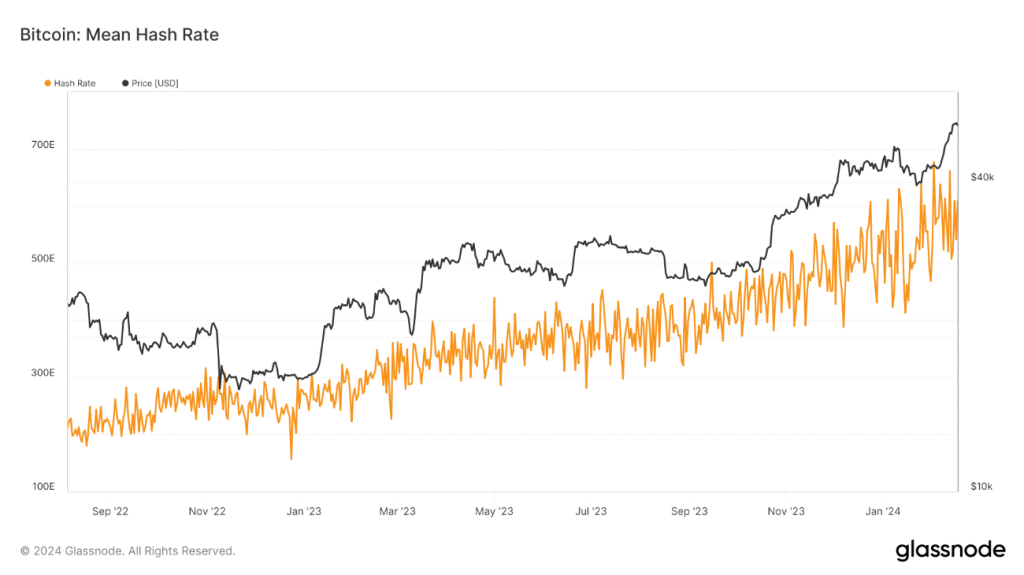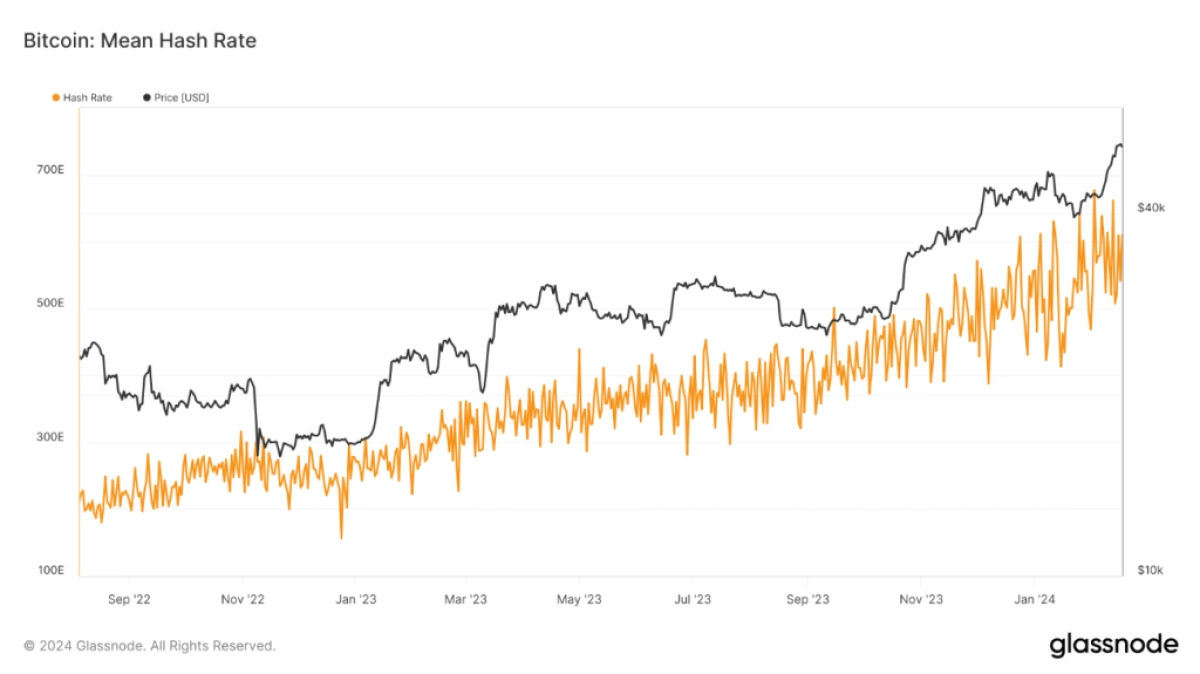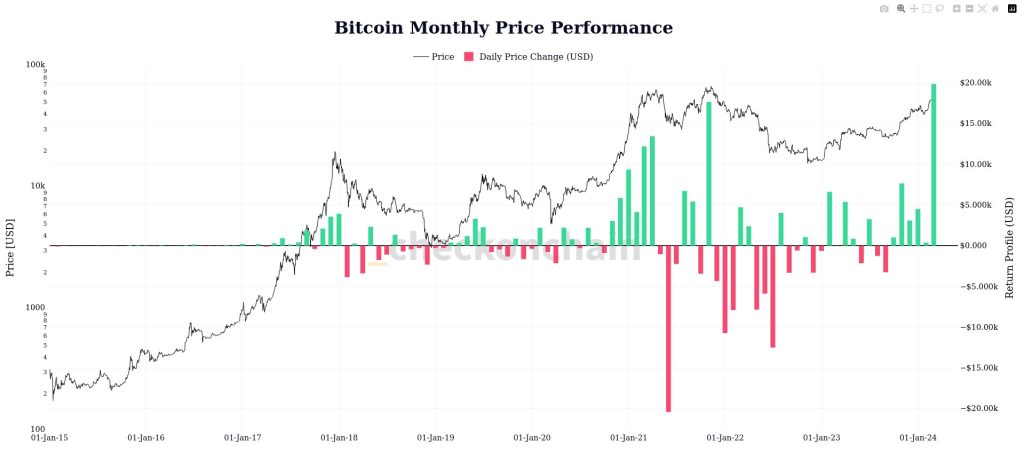The recent price rally in Bitcoin (BTC) has brought a double-edged sword for miners, boosting network security but raising concerns about their long-term sustainability.
While the hash rate, a measure of computing power dedicated to securing the network, has surged to over 610 trillion hashes per second, miner fees have simultaneously plunged to their lowest point in 2024, data from Glassnode shows. This dichotomy paints a complex picture for the future of Bitcoin mining, with potential shakeouts looming on the horizon.
Hash Rate Hits New Heights, Network Security Strengthens
News of Bitcoin’s price breaching the $50,000 level for five consecutive days has attracted a wave of new miners, pushing the network’s hash rate to near peak levels. This surge signifies increased computational power dedicated to validating transactions and securing the network. This positive development highlights Bitcoin’s growing resilience against malicious attacks.

However, the rise in competition has a flip side. Our analysis reveals a corresponding increase in network difficulty, making it computationally harder and more energy-intensive to mine a block. This poses a challenge for less efficient miners, potentially squeezing them out of the picture.
Declining Fees Squeeze Miner Revenue
While the hash rate and network difficulty climb, miner fees have taken a nosedive. Starting February at over 5%, fees peaked at 15% before plummeting to around 3% at the time of writing, marking the lowest point in 2024. This significant drop indicates that transaction volume hasn’t kept pace with the influx of miners, leading to fierce competition for significantly smaller rewards.
While the current fee isn’t the lowest recorded, it raises concerns about long-term miner profitability. As Galaxy Digital analysts point out, up to 20% of the current hash rate could go offline after the upcoming Bitcoin halving, which will see block rewards slashed in half.
Halving Looms, Efficiency Becomes KeyThe upcoming halving in May 2024 poses another significant challenge for miners. With block rewards dropping from 6.25 BTC to 3.125 BTC, only the most efficient mining rigs will remain profitable.
Galaxy Digital’s analysis, based on various power prices and transaction fee assumptions, suggests that some popular miner models might become unprofitable after the halving, potentially leading to a shakeout among less efficient operators.
On Price, Regulation, And InnovationThe future of Bitcoin mining remains uncertain. While the price hovering above $50,000 indicates continued bullish sentiment, its impact on the halving is debatable. Some predict a price increase due to supply scarcity, while others expect a temporary dip.
Additionally, regulatory developments and the emergence of new technologies like Bitcoin Ordinals, which could increase transaction volume and boost miner fees, add further complexity to the equation.
Bitcoin miners could face a period of significant changes. While the network’s security is bolstered by a rising hash rate, declining fees and the looming halving raise concerns about long-term profitability.
Featured image from Adobe Stock, chart from TradingView





